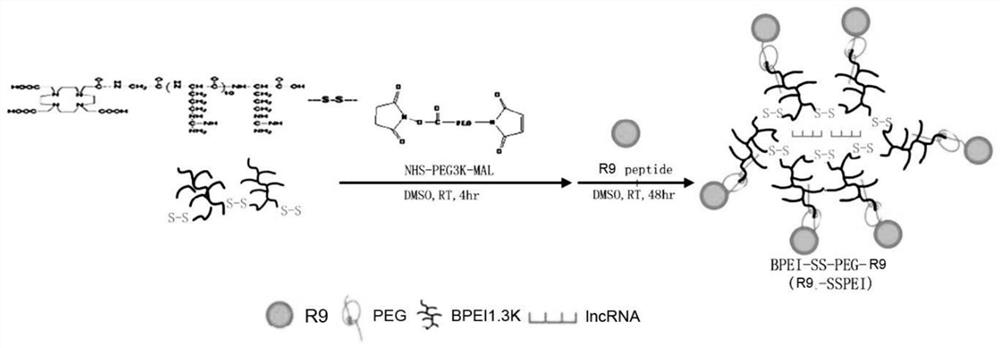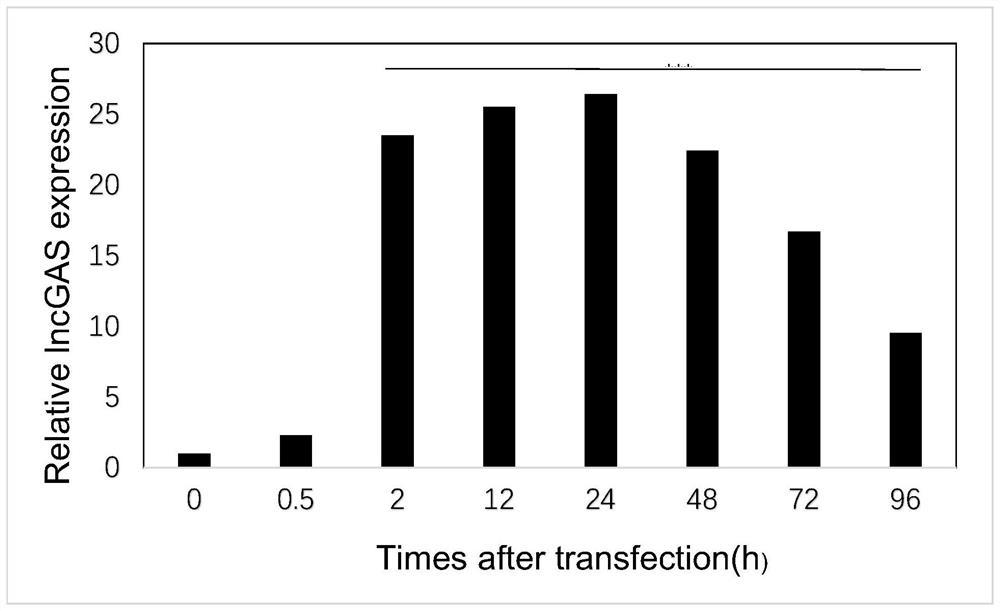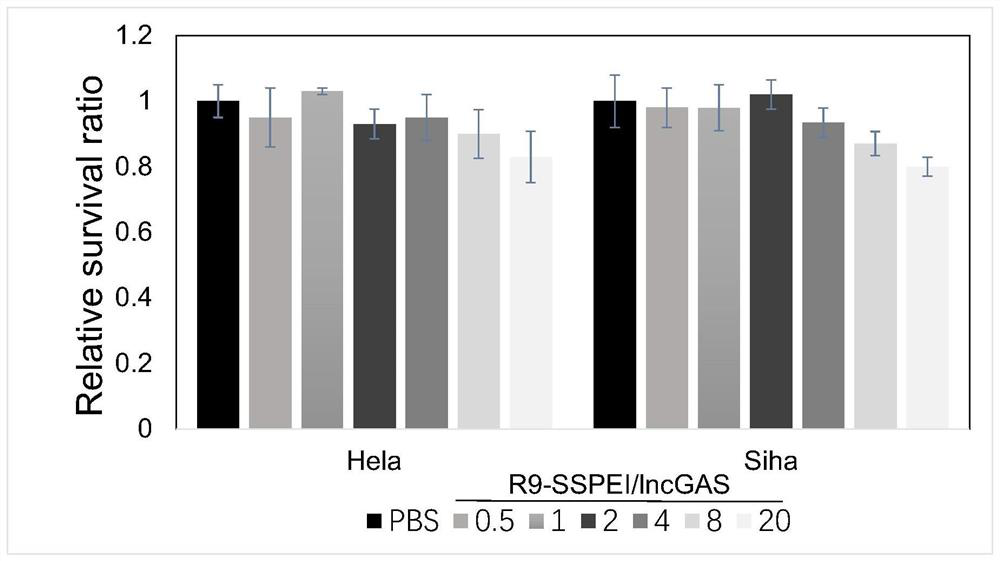Targeted cell-penetrating peptide for enhancing radiotherapy sensitivity of cervical cancer, modified nanoparticle compound and pharmaceutical application
A nanoparticle and membrane-penetrating peptide technology, applied in nanomedicine, nanotechnology for materials and surface science, nanotechnology, etc., can solve the problems of high cytotoxicity, lack of targeting, etc., to prolong circulation time, improve Colloid stability and enhanced radiosensitivity effects
- Summary
- Abstract
- Description
- Claims
- Application Information
AI Technical Summary
Problems solved by technology
Method used
Image
Examples
Embodiment 1
[0030] Example 1 Synthesis of R9-SSPEI-lncGAS nanoparticle complex
[0031] see figure 1 , the specific synthesis process is as follows:
[0032]The synthesized lncGAS was dissolved in a flask (100ml) with methanol (30ml), and the sample was purified with liquid nitrogen and stored in vacuum for 10-20min. The calculated amount of propylene sulfide (1.2k 5 moles more than BPEI) was added by syringe. The solution was stirred at 60°C for 24 h, and the reaction mixture was evaporated to dryness under reduced pressure, then dissolved in methanol, and precipitated twice in ice-cold diethyl ether. Ellman's method was used to measure the content of thiol groups in the product. BPEI-SH (0.5 g) was dissolved in anhydrous dimethyl sulfoxide (50 ml), and stirred at room temperature for 48 h to cause oxidative cross-linking of thiol groups. The product was purified by dialysis against D.I. water (mwco3500) and extensively freeze-dried, and its chemical structure was confirmed by proton...
Embodiment 2
[0034] Example 2 Stability detection of R9-SSPEI-lncGAS nanoparticle complex
[0035] The stability of the nanocomplexes was determined by qRT-PCR experiments ( figure 2 ). 50nM R9-SSPEI / lncGAS nanoparticle complex and 50nM lncGAS (control) were incubated with serum at 37°C, and samples at different time points were taken for qRT-PCR to observe the stability of lncGAS.
Embodiment 3
[0036] Example 3 Cytotoxicity detection of R9-SSPEI-lncGAS nanoparticle complexes
[0037] MTT assay was performed after adding different mass ratios of R9-SSPEI / lncGAS complexes (R9-SSPEI / lncGAS mass ratios were 0.5, 1, 2, 4, 8, 16) to cervical cancer cell lines Hela and Siha cells and incubated for 48 hours , to detect cell proliferation, such as image 3 shown.
PUM
 Login to View More
Login to View More Abstract
Description
Claims
Application Information
 Login to View More
Login to View More - R&D
- Intellectual Property
- Life Sciences
- Materials
- Tech Scout
- Unparalleled Data Quality
- Higher Quality Content
- 60% Fewer Hallucinations
Browse by: Latest US Patents, China's latest patents, Technical Efficacy Thesaurus, Application Domain, Technology Topic, Popular Technical Reports.
© 2025 PatSnap. All rights reserved.Legal|Privacy policy|Modern Slavery Act Transparency Statement|Sitemap|About US| Contact US: help@patsnap.com



